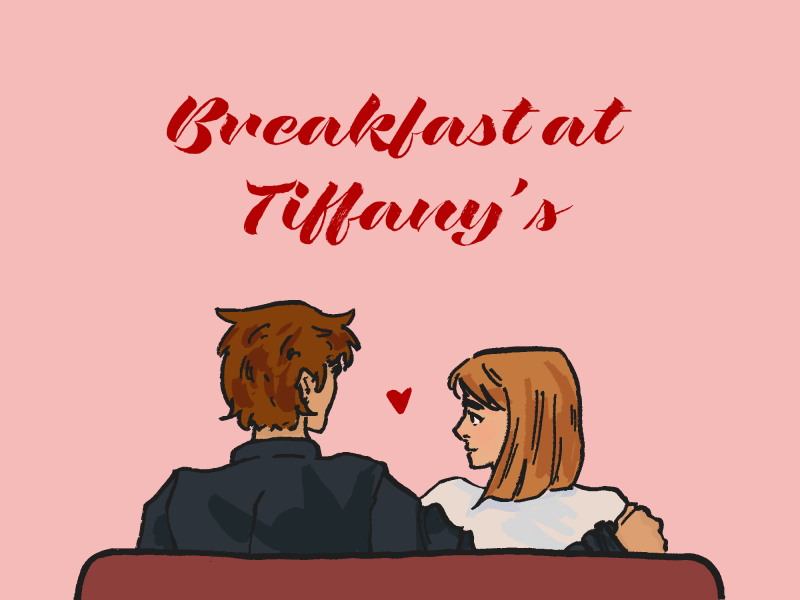“Breakfast at Tiffany’s” is the pinnacle of questionable, yet iconic 20th-century American cinema.
Notable for its portrayal of New York City, the film captures the glamor and excitement of the early 1960s through costuming and set. The movie is about a young woman who moves from a small rural town to New York City and tries to make a living seducing wealthy men.
Audrey Hepburn has almost become synonymous with the protagonist, Holly Golightly. The image of Hepburn in her little black dress with pearls and large sunglasses, carrying an oversized cigarette holder, is burned in the collective mindset of society. “Breakfast at Tiffany’s” is an indisputable aesthetic classic, remaining popular despite being released more than half a century ago.
However, the romantic comedy is problematic in that it reflects the harmful societal biases that were prevalent in the ’60s. Although we can recognize that it is a product of its time, it is almost impossible to move beyond those biases if we continue to place this film on a pedestal.
“Breakfast at Tiffany’s” is appealing because it reminds us of the old romantic ideals of Hollywood, wrapped up in 1960s glitz and glam. The racism and discriminatory stereotypes of that era are so often forgotten, despite their presence in the film.
For example, I. Y. Yunioshi, Holly’s Japanese neighbor in the movie, is played by a white actor in yellowface makeup to be a mimicry of a Japanese man. His character is made out to be the comedic relief, yet the comedy is at the expense of his race — he speaks in a heavy accent and uses exaggerated facial expressions. This illustrates how little regard Hollywood had for authentic portrayals of people of color. Not only does this portrayal reinforce negative stereotypes, it is also dehumanizing, as Yunioshi becomes a caricature.
This form of racism has been used in Hollywood for decades. By continuing to idealize “Breakfast at Tiffany’s,” we are essentially stating that the glamor of the aesthetic is more important than disavowing its blatant racism.
The movie is also hardly “good enough” to warrant ignoring the problematic aspects. It is an enjoyable movie but has a thin plot, flat characters and story that does not lead me to rewatch the film. Also, Hepburn is unconvincing in her role of a poor Texan girl who moves to the big city to make a new life for herself; it is impossible to imagine Hepburn as someone with farmgirl roots.
The slow-paced romantic comedy romanticizes the troubled past of the frivolous main character, making it impossible to lean into the — frankly, predictable — storyline. There is a superficial emphasis on material possessions (the jewelry store Tiffany’s represents Golightly’s ultimate cravings), as well as outdated gender roles, where the woman needs a man to take care of her (after hopping from boyfriend to boyfriend, Golightly does not end up being independent but ends up falling into her neighbor’s arms).
I honestly believe that if it were not for the Givenchy costumes and the soundtrack, this movie would have been forgotten long ago. It all leads me to wonder why we ignore the problematic aspects of this film in favor of clinging onto the aesthetic it presents.
Editor’s Note: This article is a review and includes subjective thoughts, opinions and critiques.
